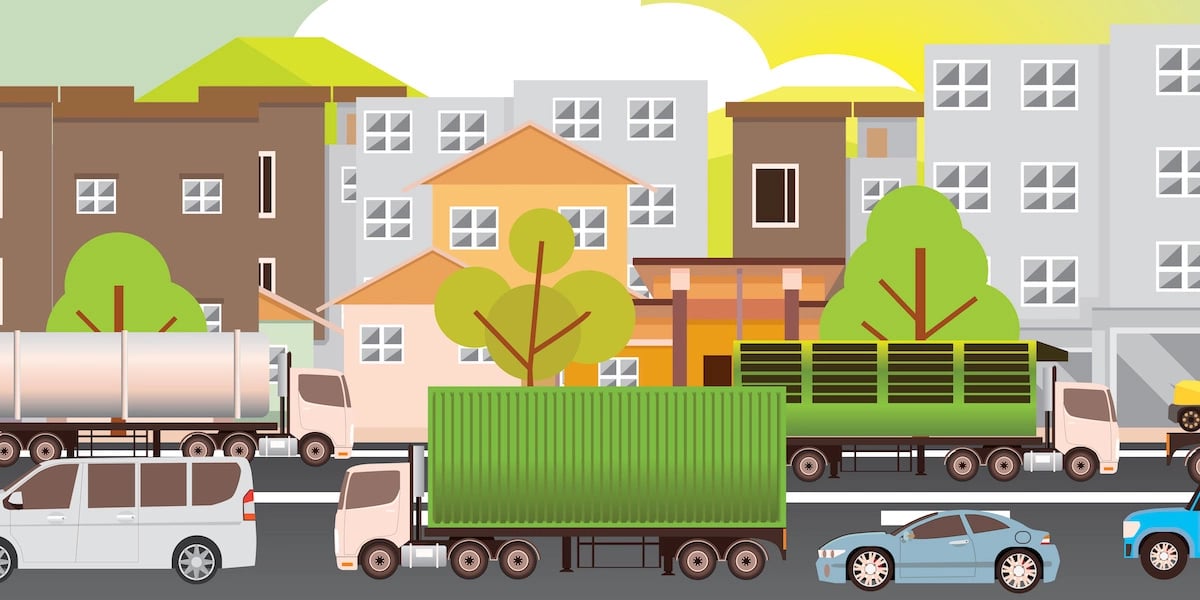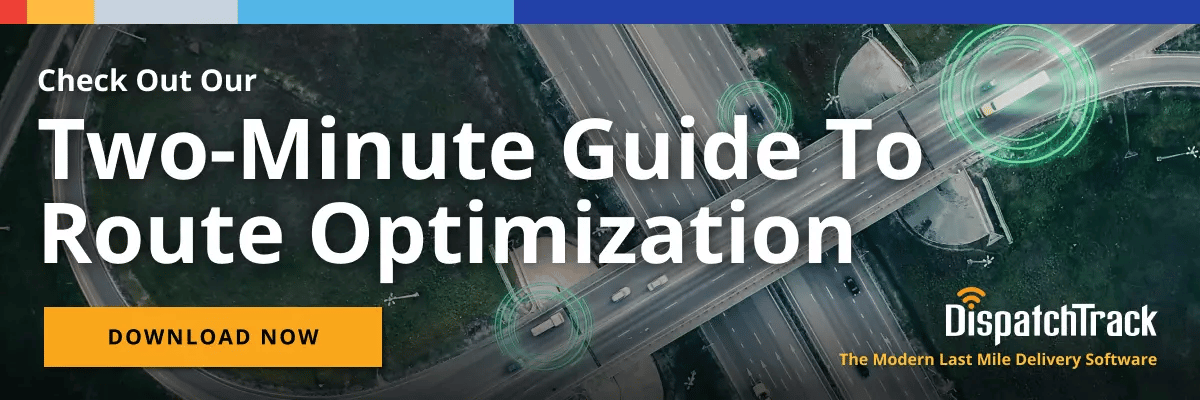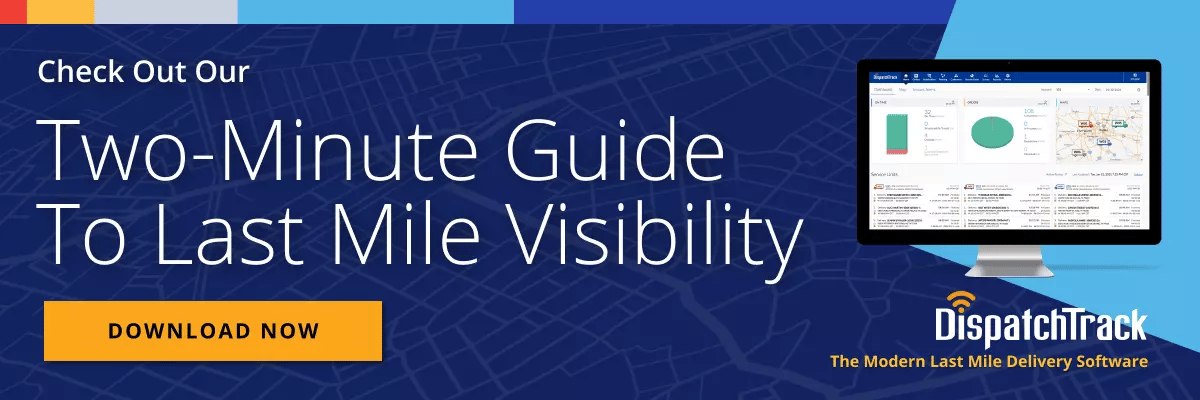One of the most important topics in delivery and logistics management right now is sustainability. Businesses across any number of industries are working to cut their emissions and reduce their carbon footprints—and with good reason. By taking proactive steps to become more sustainable, you’re setting yourself up for future success while contributing to a global effort to fight climate change. The only question is: how do you do it?

At DispatchTrack, this question concerns us directly. The last mile has historically been the leg of the supply chain that consumes the most resources, in part because it’s so difficult to optimize. As last mile logistics software providers, that gives a challenge and an opportunity to find a way to decrease waste in the last mile and ultimately help our users reduce their carbon footprints. Here’s how we’re doing that right now:
Decreasing Emissions via Route Optimization
Perhaps the most obvious impact—and in many ways the most powerful—is the ability of our route optimization engine to decrease fuel consumption. By taking in all of a given day’s stops and finding the most efficient sequences and routes, we’re able to shorten the total distance that drivers have to travel in order to fulfill all of their assigned orders. This reduces fuel consumption across your fleet by as much as 10%.
Crucially, we’re able to preserve this route efficiency even in situations where other solutions might run into trouble. Our cloud-based routing capabilities are highly scalable, which means we can route efficiently for hundreds or thousands of trucks without missing a beat. By the same token, our routing algorithm is powerful enough to factor in a complex set of constraints with minimal loss of efficiency. If, for instance, you’re factoring in customer time window requests (something that would typically cause routes to become less efficient and thus cause more fuel consumption), the system still keeps the routes short and your fuel usage low.

Improving Return Management and Reverse Logistics
One of the reasons that last mile delivery is so resource-intensive comes down to simple fuel usage—but a significant portion also comes from the overall complexity of the task, which has the potential to generate serious wastage. Drivers running late can result in failed deliveries, which then require you to take on the fuel and labor costs associated with reverse logistics and potentially drive the same items to the same place the next day. Likewise, if a customer rejects a delivery and you don’t have the last mile optimization tools to track and understand the order exception in real-time, perfectly good products can wind up on the scrap heap—meaning that the resources involved in making that product will have been wasted.
How does DispatchTrack help here? By powering unprecedented last mile visibility and delivery tracking. Let’s look at returns as an example:
- Without DispatchTrack: A meaningful percentage of delivery orders each day are returned for one reason or another, but because the last mile is essentially a black box, you can’t triage the returns effectively. Once the driver is on the road, dispatchers and managers aren’t receiving automatic updates, and they have limited visibility into which orders have been completed, which haven’t, and what went wrong with the failed or rejected deliveries. Items that went out for delivery come back with no audit trail or context. At that point, shrinking your carbon footprint by reducing waste is essentially impossible.
- With DispatchTrack: Drivers are able to use the DispatchTrack mobile app to automatically send order updates back to dispatch. This includes photos, videos, and notes documenting both successful and unsuccessful deliveries. Drivers can even make note of whether a particular item should be slated for redelivery, redelivered after fixing minor damage, etc. When these orders make it back to the warehouse, dispatchers and managers are already aware of which ones need their attention. By giving you the tools to triage returns more effectively in this way, DispatchTrack’s last mile optimization platform actually helps you significantly decrease the amount of waste in this leg of the supply chain.
Of course, all this is on top of robust customer communication tools that make failed deliveries less likely in the first place. We give drivers the power to keep customers informed about when their orders are actually going to show up, and even enable customers to track their own orders in real-time, cutting down on the need to field where’s-my-order calls in large quantities. The result is that customers are much more likely to be home when the driver arrives.
Cutting Down on Waste
The return management example above is just a representative example of the ways in which DispatchTrack helps support waste reduction and sustainability efforts. There are other examples (decreasing the number of trucks you need in your fleet to meet demand, eliminating the need for on-site servers via our multi-tenant SaaS capabilities, etc.), but they all follow a common theme: by cutting through the complexity of last mile delivery operations, we give our users the ability to pinpoint areas of waste and address them proactively.
If you’ve been grappling with last mile deliveries for any length of time, you know that this is no mean feat. In order to become more efficient in any area of logistics, you first need to understand what’s happening within your operation on an incredibly granular level. With its emphasis on connectivity, its intuitive real-time visibility dashboard, and its robust reporting and data integration capabilities, DispatchTrack does just that.
What does that mean from a practical perspective? It means that in addition to helping you reduce emissions in the form of lower fuel consumption and increased efficiency, DispatchTrack also helps you lay the foundation for larger sustainability efforts that might go beyond the scope of last mile delivery management. Sustainability initiatives ultimately need to apply to the entire supply chain—but a holistic approach requires end-to-end visibility and connectivity. The fact that our platform is built for precisely that makes DispatchTrack an ideal technology partner when it comes to going green.
